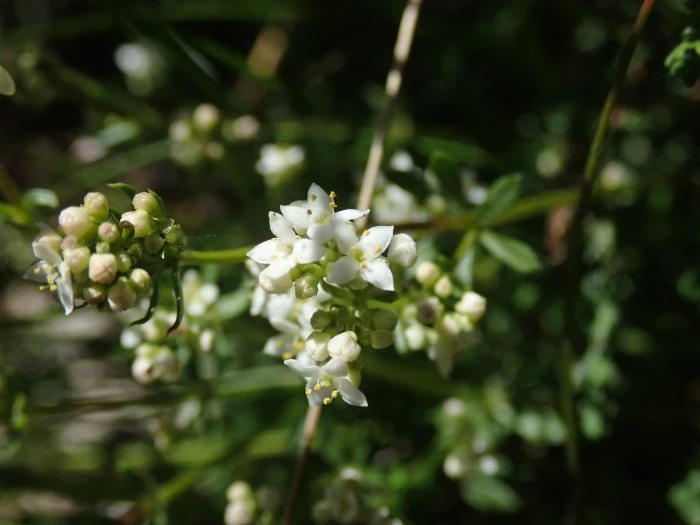Heath Bedstraw
(Galium saxatile)
Heath Bedstraw (Galium saxatile)
/
/

agujaceratops
CC BY 4.0
Image By:
agujaceratops
Recorded By:
Copyright:
CC BY 4.0
Copyright Notice:
Photo by: agujaceratops | License Type: CC BY 4.0 | License URL: http://creativecommons.org/licenses/by/4.0/ | Rights Holder: agujaceratops | Publisher: iNaturalist | Date Created: 2020-06-02T12:08:18-07:00 |

























Estimated Native Range
Climate Requirements
| • Precipitation | 35" - 41" |
| • High Temp. | 62°F - 72°F |
| • Low Temp. | 25°F - 35°F |
Summary
Galium saxatile, commonly known as Heath Bedstraw, is a perennial herb that forms dense mats and is native to a variety of habitats including dry grasslands, moorlands, heaths, and open woodlands across northern and central Europe. It typically grows up to 7.9 inches (20 centimeters) tall and produces small, white, star-shaped flowers from May to August in the UK, which are less showy but provide a delicate texture to the plant’s overall appearance. The stems are hairless and four-sided, with lanceolate or obovate leaves arranged in whorls, giving it a fine-textured look.
Heath Bedstraw is valued for its ability to form evergreen ground cover, which suppresses weeds and provides a low-maintenance option for gardeners. It is also appreciated for its role in supporting wildlife, such as serving as nectar for the mountain ringlet butterfly. This plant is well-suited for rock gardens, borders, and as part of a wildlife-friendly garden. It thrives in well-drained, sandy or gravelly soils, and prefers full sun to partial shade. While it is drought-tolerant once established, it benefits from occasional watering during prolonged dry periods. Heath Bedstraw can spread readily by rooting at the nodes, which should be considered to prevent unwanted spread in smaller garden spaces.CC BY-SA 4.0
Heath Bedstraw is valued for its ability to form evergreen ground cover, which suppresses weeds and provides a low-maintenance option for gardeners. It is also appreciated for its role in supporting wildlife, such as serving as nectar for the mountain ringlet butterfly. This plant is well-suited for rock gardens, borders, and as part of a wildlife-friendly garden. It thrives in well-drained, sandy or gravelly soils, and prefers full sun to partial shade. While it is drought-tolerant once established, it benefits from occasional watering during prolonged dry periods. Heath Bedstraw can spread readily by rooting at the nodes, which should be considered to prevent unwanted spread in smaller garden spaces.CC BY-SA 4.0
Plant Description
- Plant Type: Herb
- Height: 0.3-0.6 feet
- Width: 0.5-1 feet
- Growth Rate: Moderate
- Flower Color: White
- Flowering Season: Summer
- Leaf Retention: Deciduous
Growth Requirements
- Sun: Full Sun, Part Shade
- Water: Medium
- Drainage: Medium, Fast
Common Uses
Bee Garden, Low Maintenance
Natural Habitat
native to a variety of habitats including dry grasslands, moorlands, heaths, and open woodlands across northern and central Europe
Other Names
Common Names: Stone Bedstraw
Scientific Names: Galium saxatile, Galium helveticum, Galium pumilum subsp. saxatile
GBIF Accepted Name: Galium saxatile